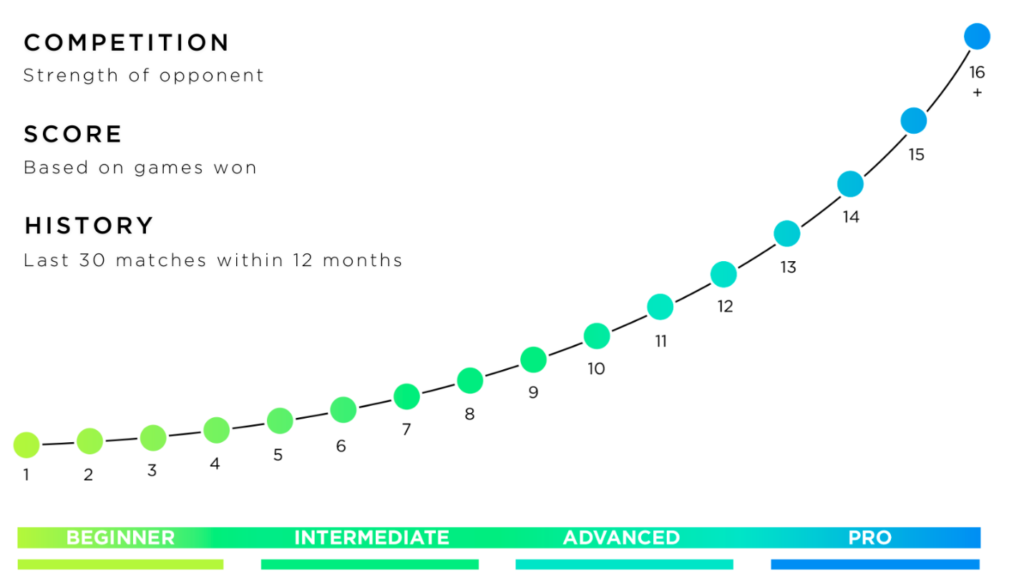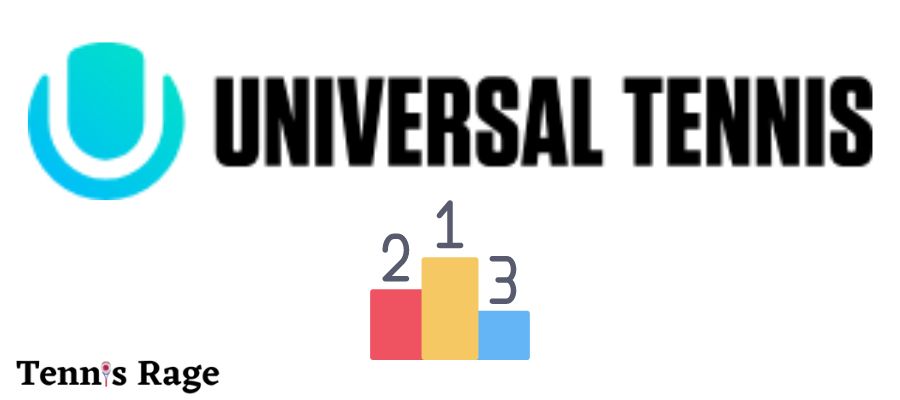Universal Tennis Rating, commonly knows as UTR, is a global ranking system for all tennis players around the world. Completely independent of a player’s age, gender, and country, players are ranked based on their skill level on a scale from 1.00 to 16.50. A player’s UTR rating is based on the results of his or her recent matches.

As explained on the UTR website, “UTR by Universal Tennis is a global rating system that promotes fair and competitive play across the tennis world.
All players, regardless of age, gender, geography, or skill level, are rated on the same scale between 1.00 and 16.50 based on actual match results.”
Who Has A UTR Rating?
All tennis players who have played a match that is reported to UTR have UTR ratings. This includes everyone from male and female professional players all the way down to young boys and girls who play recreational tennis, as well as everyone in between.
UTR is especially important as a guide to help college coaches find and recruit high school players, which explains why high school tennis players are often most focused on their UTR.
History Of The UTR
The inventor of the UTR system is Dave Howell, a Virginia tennis professional. He began testing this scoring system 15 years ago and it has proven wildly successful. Howell coached many young players in the US, and he found the inspiration to create UTR in France where the players he coached competed.
He saw that the French had a better rating system than the one that was present in the US and that it showed the strength of a particular player more accurately.

Based on that system, he concluded that in four matches, young American players play only one truly competitive match in which their rivals win seven or more games.
Howell along with his colleagues built upon the French system and created the UTR system with an established algorithm. The UTR system was initially only valid in Virginia and then spread throughout the US and then the world.
How Is The UTR Calculated?
Each player’s UTR rating is determined by the UTR algorithm which looks the last 30 matches played over the prior 12 months. If a player has played 30 or fewer matches in the last 12 months, the algorithm will use all of the matches. If a player has played more than 30 matches in the last 12 months, the algorithm will only consider the last 30 matches.
For each match that is counted, the UTR algorithm will create a “match rating” and a “match weight.” The UTR rating is then calculated using the weighted average of all of the match ratings. This will be explained in more detail below.
Match Rating
What is important to understand is that the UTR algorithm calculates an expected outcome for each match prior to the match taking place. In other words, if you are playing someone slightly better than you, the algorithm might expect you to lose 6-4, 6-4.
The most important factor is how you perform relative to the expectation. If you perform better than expected, your rating will go up. If you perform worse than expected, your rating will go down. The algorithm calculates the percentage of games won.
Therefore, each and every game matters. Set tiebreakers are counted as one game and 10 point, 3rd set tiebreakers are counted as two games.
Unlike at Wimbledon or any other professional tournament where it really only matters if player wins or loses and the final score is irrelevant for purposes of calculating a player’s ATP ranking, the final score is very important for purposes of determining a UTR ranking. Every game matters in calculating how you performed relative to the expectation for the match.
Match Weight
While each match has a match rating, as explained above, not all matches are treated, or “weighted,” equally. Some matches are given more weight and could have an outsized impact on your UTR.
In other words, if you play 30 matches, some matches may be given more “weight” and be treated as being more important than other matches.
UTR calculates the weight – or relative importance – of a match using a variety of factors, including:
1) Format of the match. Longer matches (i.e. 2 out of 3 sets) are given more weight than shorter matches (i.e. one 8-game set)
2) Competitiveness of the match. The closer the ratings of the opposing players in a match, the more weight the match will be given. The reason is that a match with players who are similarly skilled is likely to produce a more competitive match that can demonstrate a player’s true skill level.
On the other hand, a match with players who are mismatched is likely to result in a match that is not close and, thus, it is more difficult to calculate a player’s true skill level.
3) Reliability of each player’s UTR – The more a player play, the more reliable the player’s UTR will be. Thus, more weight is given when playing in matches when an opposing player’s UTR is reliable.
4) Time elapsed since each match – As mentioned, the UTR algorithm will be calculated using the last up to 30 matches played over the prior 12 months. However, matches played 11 months are a less reliable indicator of a player’s current skill level than a match that was just played the prior week. Thus, more weight is given to recent matches.
Each player’s UTR is recalculated daily by taking the weighted average of the Match Ratings and Match Weight for each match included in the calculation. Because of this, it is possible for your UTR to go up or down without even playing.
For instance, as old matches are given less weight or fall out of the calculation entirely due to being more than 12 months ago, your UTR will automatically change.

Rankings vs Ratings
UTR is different from other ways of ranking players. We are certainly most familiar with the ATP and WTA rankings of the world’s top players, but these lists often give only a relative picture of the qualities of a certain player.
Most ranking systems are based on the fact that a player receives a certain number of points when he or she advances to the next round of a tournament. The strength of a tournament is best told by how many points the winner of that tournament gets.
For instance, the strongest are the Grand Slam tournaments, the winner of which receives 2,000 points.
A professional player can improve his standing in the ATP or WTA rankings by winning a tournament even if he only won by defeating players who are much weaker than him.
This will improve his or standing in the ATP or WTA rankings (and a player gets the same number of ranking points regardless of the strength of the competition), but this will not significantly affect his or her UTR rating.
This reflects the importance of the UTR rating because it gives a realistic picture of the skill level of a certain player. The former president of the ATP Player Council, Eric Butorac, once pointed out how good this method of scoring is for tennis.

“The UTR system is great for tennis in so many ways. At a UTR event, you are guaranteed to play against players who are close to your ability level. I have played a lot in France, where they have a similar system, and it works so efficiently.
I hope the whole world gets on board with UTR, as it could drastically change worldwide tennis for the better.”
How to Improve Your UTR Rating?
If you want to improve your own UTR rating, you must perform better than expected by the UTR algorithm in matches. It doesn’t matter if you play someone better or worse than you. It matters how many games you win and how you performed relative to the UTR expectation for the match.
If you perform better than expected, your UTR will increase. If you perform worse than expected, your UTR will decrease.
For this reason, every game matters. Your UTR will go up more if you win 6-0, 6-0 than if you win 6-1, 6-1. Thus, it is important for a player to never lose intensity and strive to win each and every game. Even if you are losing, you cannot give up because each game matters.
The more you play, the more accurate your rating will be and the faster your UTR can improve if you perform well. Therefore, you must compete as much as possible because then your score will reliably show your current skill level.
Novak’s UTR Improved With Age
The world’s best tennis players generally have a UTR over 16.00. As expected, Novak Djokovic has the highest UTR of anyone in the world, with a 16.38 UTR. He reached the highest UTR of his career earlier this year, with a 16.40. Here is Djokovic’s recent UTR:

As you can see in this image from the UTR website, only the top 12 players in the world currently have a UTR of 16 or higher.

When it comes to women, the highest UTR rating is currently held by Iga Swiatek, who has been recording her best results lately. Her UTR rating is 13.25, followed by Aryna Sabalenka with 13.19 and Elena Rybakina with 13.10. They are the only women with a UTR of 13 or higher.








